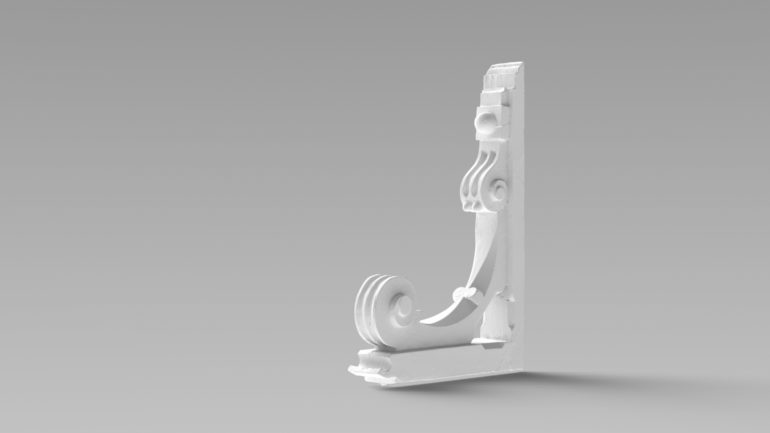The Dutch province of Noord-Holland has thousands of historic buildings and protected cityscapes. Many of these old buildings contain monumental elements that have been crafted in a traditional way. Since these crafts are often very time-consuming, renovation can be costly. The owner of a historic building in the city of Haarlem thought that 3D technology might offer a solution. She took a decorated facade-block that was heavily damaged by timber rot and brought it to a 3D printing company.
Time for an experiment!
The renovation of this decorated façade block became the starting point for a practical experiment. In a joint effort, the province and the 3D company started to research new materials and production techniques to be used at the restoration of historic buildings. The biggest challenge was how to preserve the authenticity of the building. Is an exact copy of an ornament made out of recycled plastic acceptable?
In the Netherlands, there are strict rules to guarantee authenticity when it comes to renovating historic buildings. That is why the municipality of Haarlem, as the primary enforcer of the regulations regarding it’s historic buildings, was also invited into the project.
Opportunities for innovation
Recently the roof of Notre Dame in Paris burned down. The wooden framework consisted of more than 13,000 oak beams. Even if it would be possible to find enough 3 to 400-year-old oak trees, one could still raise the question if it wouldn’t be better to opt for a stronger and safer construction with modern materials. This example is, of course, completely different from replacing a wooden facade block by a plastic copy, but the discussion about opportunities for innovation will probably also occupy the French in the coming period.
Michael Braam-Scholten, Heritage Policy Adviser – Province of North Holland:
“What is authenticity? Where do you draw the line? How bad for the authenticity of a building would it be if you would 3d shape an exact copy of the original facade decoration out of wood or out of plastic? What opportunities do these new technologies offer for heritage? In our project, we look for answers to these questions. The goal is to draw up a choice map, a clear guideline that helps professionals when renovating decorative elements in historic buildings. However, even more importantly, the project offers an opening for a broader discussion about the new possibilities.”
Teamwork and co-creation
Various partners from different professional groups are now participating in the experiment. In addition to 3DMZ, the province of Noord-Holland and the municipality of Haarlem, also InHolland University of Applied Sciences is involved in research into materials and another company, a building contractor named KernBouw, provides specialist knowledge and experience in construction. A great co-creation, in which everyone contributes their own knowledge and expertise.


